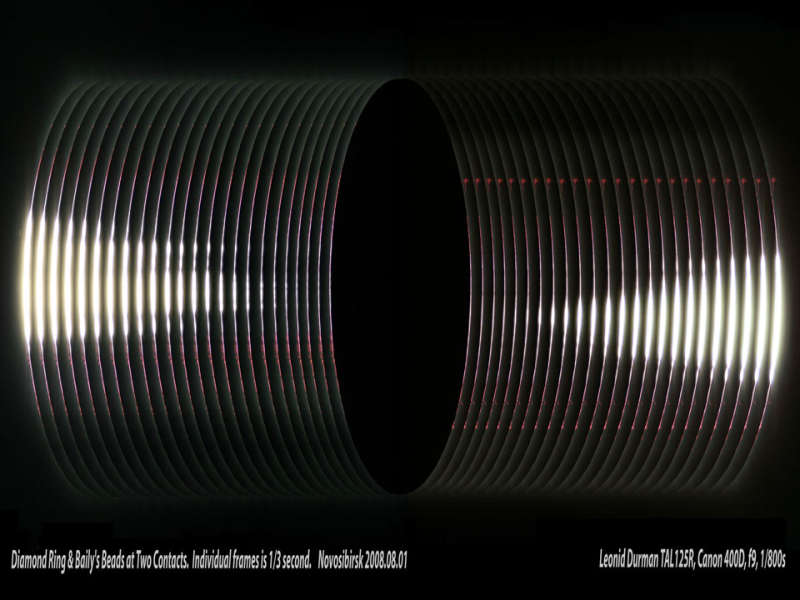Credit & Copyright: Leonid Durman
Explanation:
Just before the Sun blacks out, something strange occurs.
As the Moon moves to completely cover the Sun in a
total solar
eclipse -- like the
one set to occur over parts of Australia
on
Tuesday --
beads of bright sunlight stream
around the edge of the Moon.
This effect, known as
Baily's beads,
is named after
Francis Baily
who called attention to the
phenomenon
in 1836.
Although, the number and brightness of
Baily's beads used to be unpredictable, today the Moon
is so well mapped that general features regarding Baily's beads are expected.
When a single bead dominates, it is called the
diamond ring effect,
and is typically seen just before totality.
Pictured above, horizontally compressed,
a series of images recorded Baily's beads at times
surrounding the 2008 total solar eclipse
visible from
Novosibirsk,
Russia.
At the end of totality, as the Sun again emerges from behind the moon,
Baily's beads
may again be visible -- but now on the other side of the Moon.
1999 2000 2001 2002 2003 2004 2005 2006 2007 2008 2009 2010 2011 2012 2013 2014 2015 2016 2017 2018 2019 2020 2021 2022 2023 2024 2025 |
Yanvar' Fevral' Mart Aprel' Mai Iyun' Iyul' Avgust Sentyabr' Oktyabr' Noyabr' Dekabr' |
NASA Web Site Statements, Warnings, and Disclaimers
NASA Official: Jay Norris. Specific rights apply.
A service of: LHEA at NASA / GSFC
& Michigan Tech. U.
|
Publikacii s klyuchevymi slovami:
Baily's Beads - Chetki Beili
Publikacii so slovami: Baily's Beads - Chetki Beili | |
|
Sm. takzhe:
| |
